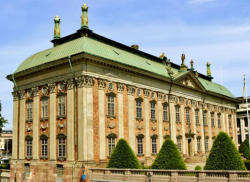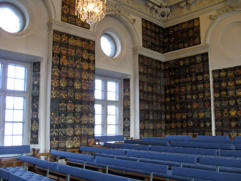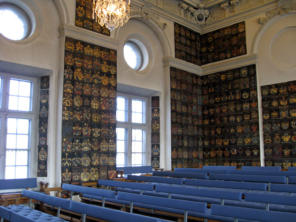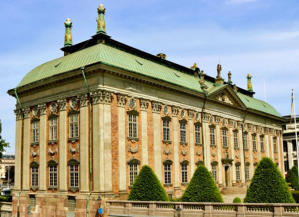

Copyright © Hans Högman 2020-07-16


Introduction
What does nobility mean and how did it begin?
Many genealogists have come across noble families
in one way or another when researching their
Swedish roots. It then might be of interest to know
how it began and what it means to be of noble birth.
Nobility
The Swedish nobility arose when some propertied
families in the 1200s came to be in a position of
power; a position that made these families more
powerful than others. These were positions worth
striving for and desired by others.
In former days, power was the same thing as
strength and strength was the way to win. Owning
property and land was a way to rule and pursue
influence on others.
The birth of the Swedish nobility took place in the
13th century. The great landowners began then to
cooperate with the royal houses and supported the
royal families both financially as well as with troops.
This support gave these landowners favorable
positions in the nation.
Supporting the King with Troops
(Rusttjänst) and Exemption from Taxation
The keeping of mounted horsemen in armor for
the disposal of the King wasn’t cheap, not even for
the propertied landowners. It came with a price;
these landowners wanted influence. As a service in
return from the King the landowners were granted
exemption from taxation. This was called “Frälse” in
Swedish but a landowner that failed to keep
horsemen in armor lost his “frälse”, i.e. he was
submitted to taxation again. Frälse or frälsemän
became a term denoting the families keeping
troopers for the King and therefore were exempted
from taxation. This was the first term for nobility in
Sweden.
Also farmers that kept mounted horsemen in armor
could be raised to “fräsle”. They were then called
“friborna frälsemän” (freeborn frälse men).
The Birth of the Nobility
A Royal Decree of 1280 (Alsnö Stadga) formally
recognized the Frälse as a privileged group of
powerful landowners. In the first modern
parliament meeting in Sweden in 1435 the noble
families were represented as their own interest
group, The Estate of Nobility. The Parliament was
then called ”The Parliament of the Estates”
(Ståndsriksdagen).
However, the two meetings in the city of Västerås in
1527 and 1544, under the rule of King Gustav Vasa,
were the first parliamentary meetings with
representation from four Estates.
The term “Riksdag” was not used until the 1540’s as
a term for parliamentary meetings. In the Riksdag of
the Estates the Riksdag had four “Estates”, each with
its own representation of the population. The four
Estates were:
•
The Nobility (Frälse or Adeln)
•
The Clergy (Prästerna)
•
The Burghers (Borgarna)
•
The Peasants (Bönderna)
In the Riksdag of the four Estates each estate held
their deliberations in separate chambers, had their
own speakers, kept minutes of their meetings but
conferred with each other from time to time. A
resolution required the assent of three estates in
order to pass (the majority principle).
The Nobles met in the Estate of the Nobility. The
Nobility was represented by the heads of families
and on certain occasions those present could
number a thousand.
Privileges
Families of Frälse (Nobility) were granted the right to
exercise the power of authority on their own private
land (landed property). The Fräsle landowners were
able to impose penalties like a court of law upon
their employees, impose fines, collect taxes from
people living on their property (farmers, tenant
farmers etc.). The Frälse landowners were also
granted the right to build chapels and to employ
their own reverends on their estates. The latter right
was called “patronatsrätt” in Swedish.
As a gratitude for the support from the noble
families (frälse), the monarch granted land (Swe:
förläning) to them, so-called fief. This was royal or
government property that was handed out to the
noblemen who had served the king well and a way
to encourage them to keep on doing so. All these
favors of course made the noble families even more
powerful.
At the end of the 16th century the noble families’
duty to support the king with mounted horsemen in
armor was abolished. However, the noble families’
privileges were kept.
Instead the nobility were in 1565 to raise a cavalry
regiment known as Adelsfanan (The Cavalry Corps
of the Nobility). This unit was in service until 1809
when it was disbanded.
The Swedish Term Adel
In the middle of the 1500s the term “Adel” became a
new term for the Frälse. The Swedish term adel can
be derived to the word “ädel” meaning “noble”.
The concept of nobility also included a heraldic coat
of arms with the noble family’s
escutcheon.
The image to the right shows the coat
of arms of the noble clan
Leijonhufvud; three lion heads.
Leijonhufvud is noble family no: 23.
Free image Wikipedia.
Swedish Noble Titles
In 1561 the then present King of Sweden, Erik XIV,
introduced two noble titles:
1.
Greve (Count or Earl (UK))
2.
Friherre (Baron)
The title Greve is the higher ranked of the two. Both
are of the Nobility (Swe: Högadel) or Peerage (UK).
Then there is a third class of untitled noble families
known as the the lesser nobility (Swe: Lågadel) or
the Gentry (UK).
It was the Nobility (Högadel) that in 1561 received
the two new titles.
Then, in 1561 three people within the Nobility were
raised to the status of Greve (Count/Earl). The titles
were also accompanied with fief (land). Nine people
within the Nobility were in 1561 raised to the status
of Friherre.
A Greve is addressed as Greve while a wife of a
Greve are adressed as Grevinna (Countess). A
Friherre is verbally addressed as Baron while a wife
of a Friherre is addressed as Friherrinna
(Baroness).
A Greve and a Friherre are entitled to the title
Högvälborne which corresponds to The Right
Honourable in the UK. For example, Högvälborne
Herr Greve Adam Ludwig Lewenhaupt (The Right
Honourable Earl Adam Ludwig Lewenhaupt).
Titles Hertig (Duke) and Hertiginna (Duchess) are in
Sweden exclusively used by members of the Royal
Family.
According to a decree of The House of Nobility
(Riddarhuset) in 1626 noble dignity is divided into
three types of statuses or ranks:
1.
The Class of Lords (Swe: Herreklassen),
comprising counts (greve) and barons (friherre,
baron).
2.
The Class of Knights (Swe: Riddarklassen),
untitled descendants of Swedish Privy
Councilors and since 1778 the 300 oldest
families in the Class of Esquire as well as the
"commander families", who are of the
descendants of commanders of Swedish royal
orders;
3.
The Class of Esquires (Swe: Svenneklassen),
other untitled nobles.
Greve (the highest noble dignity; has the right to the
title Högvälborne (The Right Honourable) - The
Nobility (Högadel).)
Friherre (the second highest noble dignity after
Greve; has the right to the title Högvälborne (The
Right Honourable) - The Nobility (Högadel).)
Untitled noblemen (Obetitlad adel) (Squires
(svenneklassen) or Gentry (Lågadel). Have the right
to the title Välborne (The Honourable)).
Families of Counts/Earls and Barons are commonly
denominated Riddarskapet (The Knighthood) in
Sweden and families of untitled noble people are
denominated Adel.
When a person was raised to nobility he usually
adopted a new family name of a special kind, typical
for the nobility. However, originally the patronymic
names were also used by nobility. For more
information, see Family names of the Nobility.
Only the Monarch had the right to elevate a
commoner into noble dignity.
About Land Ownership
It was necessary for the nobility not to marry
beneath one’s station. An important reason for this
was to avoid noble land reverting to taxed land.
From a landowning point of view, there were three
types of land:
1.
Land owned by the Nobility (Frälsejord - Noble
land)
2.
Land owned by the Crown (Kronojord - Crown
land)
3.
Land owned by farmers (Skattejord - Taxed
land)
Skattejord was land owned and farmed by
freeholders and tax was paid to the Crown.
Kronojord was land owned by the Crown farmed by
tenant farmers paying tenancies to the Crown.
These tenant farmers had inheritable right of
possession to the land they farmed. Fräslejord was
land owned by the Nobility. Tenant farmers on
Noble land paid their taxes to the noble landowner.
Fräsejord was land that was either:
1.
Owned and farmed by a noble family. These
landed properties were called säteri in Swedish
and were exempt from all kinds of taxation.
2.
Owned by a noble family but farmed by tenant
farmers paying tenancies to the noble
landowner. The land was exempted from land
tax (grundskatt).
Regulations of the Noble
Privileges
In 1569 the rights and obligations of the Nobility
were regulated. The noble members of the original
class of Knighthood were the noble families who
had achieved noble status prior to 1569. These
original noble dynasties are numbered 1 - 37.
In 1617 the Nobility were granted even more
privileges with specific benefits such as the exclusive
right to all high positions within the government
administration. Also, further tax reductions were
achieved. At the same time the nobility was to swear
total loyalty to the ruler, the King, and vow to always
offer their services to the monarch.
In the Constitution Act of 1809, the nobility’s
exclusive right to all higher positions within civil
administration was removed, as was their exclusive
right to own or purchase so-called noble land (land
exempted from taxation). When the Parliament of
the Estates was abolished in 1866 and replaced with
a modern two-chamber parliament their special
political power was significantly reduced.
In the Constitution Act of 1975 the monarch’s right
to elevate a commoner into noble dignity was
removed. Thus, commoners can no longer be
ennobled in Sweden.
Inheritance of Noble Titles
The noble dignities of Greve (Count/Earl) and
Friherre (Baron) are inheritable to all marital agnatic
progenies (Agnatic succession) to the person raised to
one of these noble titles.
Patrilineal or agnatic succession gives priority to or
restricts inheritance of a noble dignity to heirs, male
or female, descended from the original title holder
through males only. Traditionally, agnatic succession
is applied in determining the names and
membership of European dynasties.
Patrilineality, also known as the male line, the spear
side (Svärdssidan) or agnatic kinship, is a common
kinship system in which an individual's family
membership derives from and is recorded through
his or her father's lineage. It generally involves the
inheritance of property, rights, names or titles by
persons related through male kin. A patriline
("father line") is a person's father, and additional
ancestors, as traced only through males.
So, noble dignity is inherited only on the spear side.
Daughters with noble dignity can’t transfer noble
dignity to their children.
After 1809:
There is an exception to the above mentioned
general rule of agnatic succession, the so-called
Section 37 in the Swedish Constitution Act of 1809
(1809-års Regeringsform). Section 37 of 1809 states
that only the head of a dynasty (Swe: Huvudman)
raised to noble dignity has the right to carry the
noble title. When the family head dies the noble
dignity is then inherited by the next male heir in the
succession order. This will be continued thereafter
generation after generation, i.e. line after line.
So, for families ennobled after 1809 only one
member of the family could carry the noble title at a
time. In other word, only the family’s head is
authorized to carry the noble title for families raised
to nobility after 1809. This was more in line with the
British system.
The last person to be raised to noble dignity
in Sweden
Explorer Sven Hedin was the last person to be
ennobled in Sweden, who received his noble dignity
in 1902.
The right of the King of Sweden to raise people to
noble dignity was removed in the Constitution Act of
1975.
In Europe only Belgium, Luxembourg, The
Netherlands, Spain, and the UK still raise people to
noble dignity (2002).
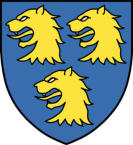
The Concept of
Nobility - Sweden
Riddarhuset - The House of
Nobility
The House of Nobility is the name of the palace but
also the name of an organization for the nobles in
Sweden and its objective is to preserve, maintain,
and shield a historical heritage. The palace was
erected during the period 1641-1672. Hanging on
the walls of the Great Hall are the coats of arms,
painted on copper plates, of noble families who have
been introduced at the House of Nobility. Altogether
2,331 families are thus represented.
The House of Nobility was established in 1625. King
Gustav II Adolf of Sweden then granted the Nobility
of Sweden the right to be one of four estates of the
Parliament - “The Parliament of the Estates”
(Ståndsriksdagen). The great hall of the House of
Nobility was used by the aristocracy for meetings of
Parliament during the Diet of the Four Estates.
When the body of the aristocrats, The House of
Nobility, was established it was decreed that the
noble families must be “introduced” to the body
(registered) in order to have a seat in the House and
be able to vote, i.e. in order to make their voices
heard.
In the introduction process each noble family was
ordered chronologically by numbers. For example,
the noble family Leijonhufvud mentioned above in
the section about “Coat of Arms” are noble family
number 23.
There was an increasing number of noble families
after 1626. In 1632
there were 239 families
with noble dignity and
in 1654 there were
767.
The image shows the
House of the Nobility
palace in Stockholm.
Photo Carol Kemp, WA,
USA, 2016.
In 1626 the Swedish nobility was organized into
three classes according to a scheme introduced in
the Standing orders of the House of Nobility
(Riddarhusordningen):
1.
The Class of Lords (Swe: Herreklassen),
comprising counts (greve) and barons (friherre,
baron).
2.
The Class of Knights (Swe: Riddarklassen),
untitled descendants of Swedish Privy
Councilors and since 1778 the 300 oldest
families in the Class of Esquire as well as the
"commander families", who are of the
descendants of commanders of Swedish royal
orders;
3.
The Class of Esquires (Swe: Svenneklassen),
other untitled nobles.
The Image shows the
Great Hall
(Riddarhussalen) with
fully 2,300 coats of
arms hanging on the
walls. Free image
Wikipedia.
In the meetings held at
the House of Nobility only the head of each noble
family was authorized to participate, i.e. only one
person per family. Until 1719 the three classes voted
separately, but from 1719 all classes were voting
together with one vote for each family head. In 1778
King Gustav III restored the classes and class voting
and at the same time he reformed the Class of
Knights. In 1809 the class voting was abolished, and
the nobility was from then voting as stated in 1719.
In 1809 the nobility lost their exclusive right to
higher positions in Government administration. The
Parliament of the Estates was abolished in 1866 and
replaced by a two-chamber parliament. The Nobility
thereby lost their political power of being a special
body of the parliament.
A noble dynasty is regarded as died out when there
are no more living members of the family. A noble
family has died out on the spear-side when the last
male member of the family dies. A noble family has
died out on the distaff side when the last female
member with a noble title of the family dies.
Introduced Nobility vs. Un-introduced
Nobility
Following the elevation of a commoner into nobility
by the Swedish monarch, the new nobleman had to
seek introduction in order to be a fully recognized
member of the House of Nobility.
The Swedish nobility consists of both "introduced"
and "un-introduced" nobility, where the latter has
not been formally "introduced" at the House of
Nobility.
Being "introduced" at the House of Nobility meant
that the body confirmed the status of a family as
Swedish nobility. Even when a family was ennobled
by the Swedish monarch, it still had to seek
introduction at the House of Nobility to achieve such
status. Introduction, however, was not necessary for
being considered noble, based on other factors,
whereas only the introduced families had a legally
privileged position. Un-introduced families still
could use their titles, if they had any, and noble
elements and styles in their coats of arms.
Noble families of foreign origin living in Sweden
were able to be elevated into Swedish Nobility. There
were special rules for this. The members of these
families first had to be naturalized in Sweden. This
was a necessity for all families who been ennobled
by a foreign monarch. This also involved a
confirmation of these families’ foreign noble dignity.
There were costs involved in the introduction of a
noble family; matriculation fees and cost for the
making of the family’s coat of arms to be hung in the
Great Hall in the House of Nobility.
The coats of arms in the Great Hall are hung in
numerical order according to the year of
introduction.
The Swedish Peerage Book (Swe: Adelskalendern)
accounts the lineage of living families who have
been introduced into the House of Nobility. The
108th edition of the Swedish Peerage Book will be
printed in 2019.
The reasons for ennoblement were many; such as,
reward for meritorious military service or service
within civil administration or important
achievements within scientific research, techniques
or finance.
Säteri - Seat Estate
In Sweden, a seat estate (Swe: sätesgård or säteri)
was an estate where a nobleman had his permanent
residence (landed estate). Seat estates had,
especially, freedom from taxes and tithes.
The conception of seat estates dates back to 1561
when every untitled nobleman was granted
exemption from taxes for one estate, each baron
(Friherre) exemption from taxes for two estates and
counts (Greve) for three estates.
The seat estates had to be farmed and have an
erected manor in accordance with the owner’s
station to receive freedom from taxes for the estate.
Establishment of new seat estates have not been
allowed after 1681.
The freedom from taxation for seat estates was
abolished in 1810. Until 1809 commoners were not
allowed to buy noble land or seat estates.
